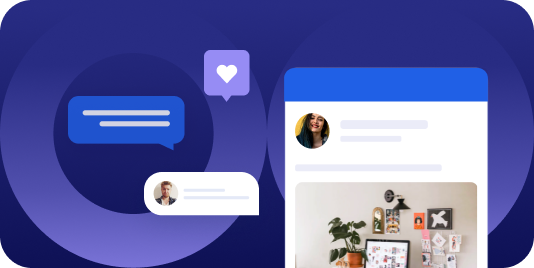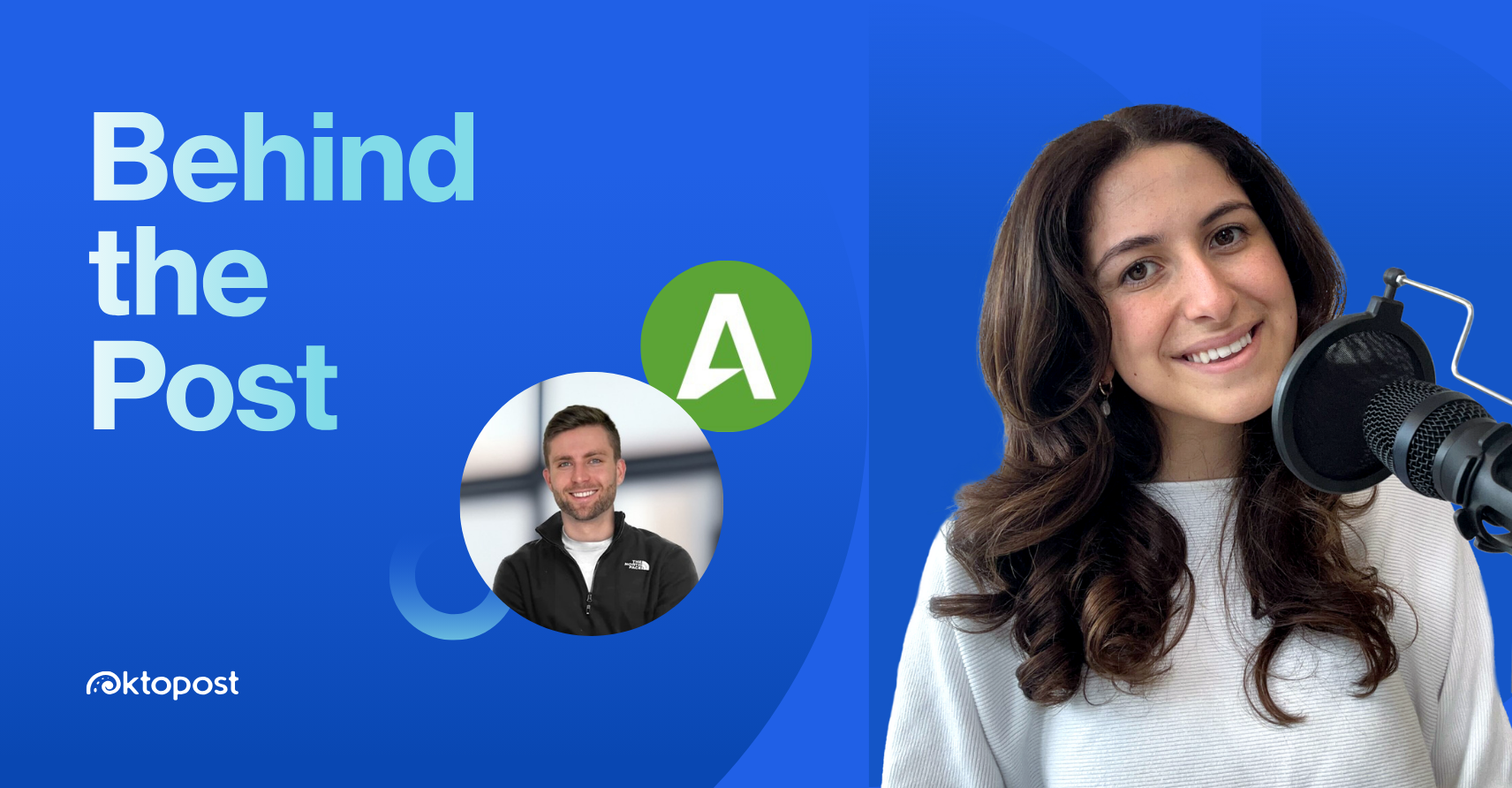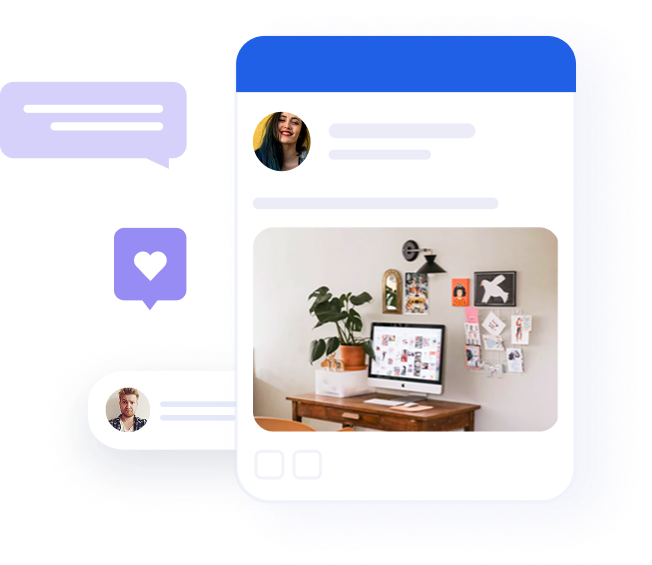
How to create content for lead generation (Gated vs Ungated)
Table of contents
When someone mentions “Content Marketing,” what are the first words that come to mind? Blog posts? Infographics? E-books? Yes, but content marketing is much more than the sum of its parts. In 2020, it is becoming an increasingly important tool in B2B lead generation—a tool that most successful businesses are utilizing, and you should be, too.

As many as 70% of B2B marketers use content marketing to generate leads. 68% say they also use it to nurture and qualify leads. Meanwhile, more than half of marketers report that their most significant challenge is producing content that generates high-quality leads.
So, what is content marketing? Why is it essential to adjust marketing operations to the “new normal”? And how can you use it to fill your funnel with leads that will actually convert to sales?
What is content marketing?
Content marketing is an element of your marketing strategy that utilizes sales and educational materials to generate and convert leads into sales.
Through research and analysis, content marketing can offer a window into your target audience’s various pain points. It will also help you understand which approaches and messages work best for your business and its potential clients.
Content marketing in the B2B funnel
One of the most critical components of your content strategy is your good old B2B lead conversion funnel. In it, you plan and produce content to address leads at each stage of the B2B funnel. These stages are divided into Top Of the Funnel (TOFU), Middle Of the Funnel (MOFU), and Bottom Of the Funnel (BOFU).
Before we discuss each stage of the funnel, it’s important to remember that no one type of content is a better match for a specific stage. Adapting your content to funnel stages is more about the message than the medium (e.g., article, white paper, webinar). That said, it does make sense to use specific content formats at particular stages of the funnel.

TOFU (Top of funnel)
There are lead funnels that start by generating demand or awareness of a problem someone is not even aware of. However, most b2b marketing funnels start when the potential client has a problem and is researching common remedies.
They haven’t committed to you in any way, so at this stage, your aim and focus must be to encourage the reader to delve deeper into the information you have provided. You don’t want to flood them with calls to action or marketing messages quite yet. Again, you can use any content as long as the messaging aligns with the funnel stage. That being said, some formats lend themselves better to TOFU messaging.
Content at this stage includes:
- Blog posts
- Infographics
- Videos
- Social media posts
MOFU (Middle of the funnel)
At the MOFU stage, your potential client has already identified the problem and believes your product or service might be the solution. You need to prove your authority and prowess as an industry leader at this stage. Here, they need their questions answered in-depth, and the more general upper-level content won’t cut it. In the middle of the B2B funnel, content usually consists of:
- White papers
- E-books
- Webinars
- Subscription-based newsletters
- Self-tests and calculators
BOFU (Bottom of the funnel)
The BOFU stage is where the magic (should) happen. At this point, the prospect is “hooked;” you’ve been establishing your authority, and it’s time to close the deal. You need to be the expert opinion and solution they have been looking for, and validate their choice to get this far. This stage is also an opportunity to reconnect with and retain current and former customers. BOFU content is primarily:
- Targeted webinars
- Case studies
- Testimonial videos
- Product demos
- Pricing promotions
- Loyalty programs
Converting a content consumer to a lead usually involves verifying their purchase intent and identifying them. This is often done by collecting their contact information through a lead capture form.
The lead capture form (or its absence) tends to categorize all the above-mentioned types of content into two categories: gated and ungated content. Each has its unique properties and approach.
Recommended for further reading
How to Create Gated and Ungated Content For Lead Generation
Before we delve into the how-to, it’s essential to understand the difference between gated and ungated content fully.
Ungated content is the information you provide visitors and potential customers with no registration or contact information required to access it. Ungated content is usually designed with organic and social traffic in mind. This type of traffic is “free” and also has an expectation of landing on a webpage and reading content freely.
Gated content is content hidden behind a lead capture form. Approximately 80% of all content marketing assets on the web are gated. It is, in many ways, a double-edged sword. Yes, it can give you those precious contact details of a potential buyer, but at what cost?
For B2B funnels, the process of producing gated content is usually longer and more expensive than producing ungated content, and the reward is also challenging. People are generally reluctant to share their personal information.
A too-detailed form can cause visitors to decide that your content isn’t worth the effort of filling it out, or even make them feel too “nosy”. Conversely, hiding a lot of content behind “easy” forms that require few details is bound to flood your pipeline with irrelevant “spammy” leads or deter people altogether.
Another hidden cost of gating content is its limited visibility on search engines and the difficulty in tracking performance over dark social channels.
The Great Gate Debate
There are many differing opinions on the topic of content gating. Some advise marketers to refrain from gating their content. Others still strongly believe that gated content can successfully generate and convert quality leads.
With so much of the debate focused on the superiority of one over the other in lead generation, the main point seems to be missed. There is value in both types of content at different phases of the marketing and sales funnels. The key is knowing how to create the right content, both gated and ungated.
Let’s review the processes for creating each type.
Creating ungated content for lead generation
Step 1 – Research
The first step is to understand what pains your potential clients and what matters to them. A good method is to follow Google News and popular industry blogs for insights. Research is the first step in creating ungated content. Don’t forget to include a dive into your competitors’ content to find the “negative space” where your content can shine.
This is also the stage where you choose the medium and channels. Will a blog post attract more attention, or will a video or podcast bring in the value? And where should you publish it? Your company blog? Social media? Guest post on an industry blog?
With its ability to attract organic traffic, your ungated content should utilize keywords and effective structuring techniques to enhance SEO. This will ensure your content is found on search engines.
Having figured those out, you can move forward to producing your content.
Step 2 – Development & production
Knowing the topic and keywords is the first step to developing ungated content. Although many approaches to content production vary according to the type of content, some aspects remain consistent. For example, it is important to streamline your content production process.
Though this is true for all types of content, ungated content is particularly critical. Having a well-planned workflow and content calendar goes a long way in making your content marketing efforts ROI-positive. Moreover, lengthy content development cycles put you at risk of publishing content that is no longer relevant.
Step 3 – Publishing & promoting
The famous adage “if you build it, they will come” does not apply to content marketing, regardless of how strong your SEO strategy is. This is especially true for non-textual content that doesn’t get indexed by Google as thoroughly as blog posts or articles.
In addition to the channels you chose for your content publication in the planning stage, be sure to plan your promotional strategy for every piece and type of content. Find the pages, groups, websites, and publications that target the exact audience you do, and try to leverage their audience to amplify your message.
Note that organic content promotion can become a time-consuming endeavor. To aid in this, utilize marketing automation tools to streamline the process.
Step 4 – Measuring and tracking
Measuring the effectiveness and performance of your content marketing efforts is critical. It allows you to adjust your strategies and messaging. More importantly, it shows you which pieces of content have the most impact on lead generation by guiding your prospects through your funnel.
As they begin to trust your brand and show interest in your product through ungated content, you can leverage it to guide them toward the premium content hidden behind a lead capture form.

Creating gated content
Step 1 – Research and development
Gated content starts with defining the context and specific purpose of this piece of content. For example, it may be part of a planned advertising campaign. Alternatively, it may be produced and distributed at an upcoming industry trade event or conference.
Your gated content informs potential leads of the latest industry and company developments. Therefore, topic choice and the quality of the content in these pieces are paramount. To make it attractive enough for people to fill a form (and actually read the content as well), it needs to be uniquely original and insightful.
Note that this is also the time to refine your product’s context to match the content offered. In many cases, this is where your prospect will first encounter messaging that promotes the sale of your product.
Step 2 – Production
As it is unique and of high value, gated content demands a much greater investment and takes longer to produce. Like with ungated content, there are many ways to approach the production process itself, but collaboration and timelines are both necessary.
Step 3 – Publishing and promotion
Publishing and promoting gated content differ significantly from the approach to ungated content. Since gated content is often geared toward a very specific segment of your general audience, it is a perfect candidate for paid promotion in highly targeted ad campaigns.
Another aspect to consider is the gate itself. There’s no shortage of statistics and advice on the number of fields to include in a lead form. Overall, the choice and design of the gate to your premium content depend highly on your product and the location of this content in your marketing funnel.
Conclusion
Creating your content strategically, with different phases of your funnel in mind, will significantly improve lead generation and the quality of leads in your pipeline. Much more than focusing on which pieces of content to gate.
Following the steps to craft your gated and ungated content to generate leads might just make the difference between “dead” content and content that is a lean, mean lead generation machine.




